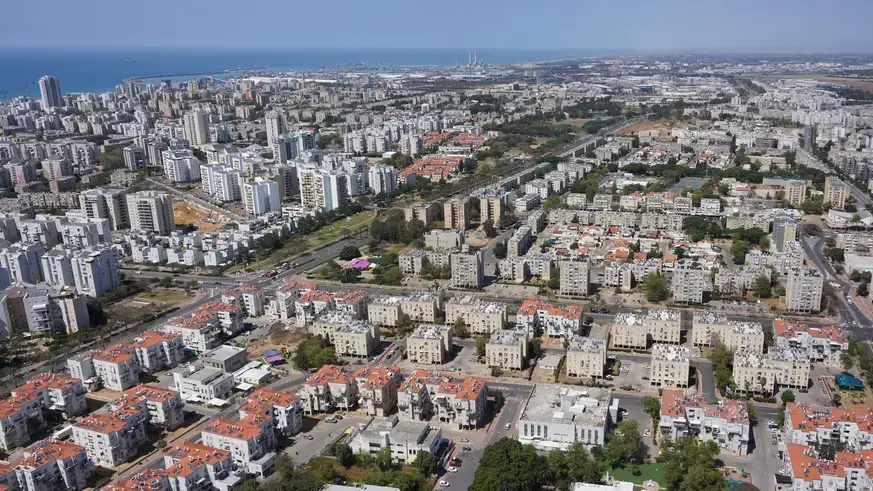Aerial view of the city of Ashdod/ShutterStock
An analysis conducted by the Israeli Council for Building at Height (CTBU Israel) shows that Bnei Brak is no longer the densest city in Israel, as of 2023 the city of Ashdod takes the title, with an average of 15.6 apartments per building.
It is followed by Bnei Brak with an average apartment ratio of 12.2 apartments per building, and Tel Aviv in third place with an average of 11.7 apartments per building.
It is important to note that this is not about the number of people per square kilometer, where Bnei Brak is still in first place with about 28 thousand inhabitants per square kilometer - but the number of apartments compared to buildings, which is only one indication of overcrowding.
Also, in an international comparison, Israel is in a unique situation that requires it to be creative in optimizing the use of land in light of the unusual birth rates among developed countries.
The analysis is based on a survey of apartments and buildings by the Central Bureau of Statistics (CBS) that is published every year (the 2023 data was published in January of this year) and shows the number of apartments in each city and the number of buildings. The ratio between them actually shows the average number of apartments per building.
These data Make it possible to know which cities use the land resource more efficiently and lead to better urbanism, while leaving land reserves free for public areas and green areas, and for their people, which cities use the land resource in an inefficient way.
Crowding in the positive sense
The chairman of CTBU Israel, the architect Gil Shanhav, explains that what we all call density is actually "urban intensity" which reflects a positive density, as opposed to the word density which in his eyes reflects a negative thing perceived with third world countries such as India. Shanhav agrees that in addition to the number of apartments in each A structure should examine other aspects.
"Correct utilization of the land stems from many aspects such as transportation networks for mass transportation, public buildings and green areas. If you crowd buildings but haven't added a school and you don't have a mass transportation system, then the density is only numerical and does not fulfill its purpose.
In order to have a good intensity, all the networks need to exist, and thus it is possible to achieve a good intensity without the city feeling crowded in the negative sense," explains Shanhav.
Further analysis of the data makes it possible to examine the situation not only at the current point in time, which is usually affected by the older construction in the city, but also the densification efforts of every city in recent years. For example, the data shows that between 2018 and 2023 Tel Aviv is the "overcrowding champion". 11,721 apartments were added to the city in only 180 buildings. That is, over 65 apartments per building on average. Ashdod is the second city that led to urban intensification increased, when between these years 80 buildings were added in the city against the addition of 3,395 apartments - an average of about 42 apartments per building. In Haifa, 5,589 apartments were added at a ratio of about 24 apartments per building.
About 43,000 tower construction starts since 2018/ShutterStock
In the other big cities, between these years, hundreds of buildings were added with the addition of thousands of apartments and a low density ratio.
For example, Beer Sheva, which for years fought for the addition of detached houses to the city with about 6 apartments per building, and in Jerusalem they did not use the land resource well either, when more than 18 thousand apartments were added to the city that were built in about 5,500 buildings (about 3 apartments per building ).
Another surprising figure shows that from 2018 in the city of Bnei Brak, 99 buildings were demolished, but there was still an addition of about 362 apartments.
The reason for this is probably due to the urban renewal procedures that the city is going through.
Also, the CBS data shows a constant increase in high-rise construction with nearly 43 thousand construction starts in the years 2018-2023. For example, in Tel Aviv alone, about 7,000 apartments were built in towers (over 21 floors) in these years.
More on the same topic:
real estate
Ashdod
Bnei Brak
Tel Aviv Jaffa

